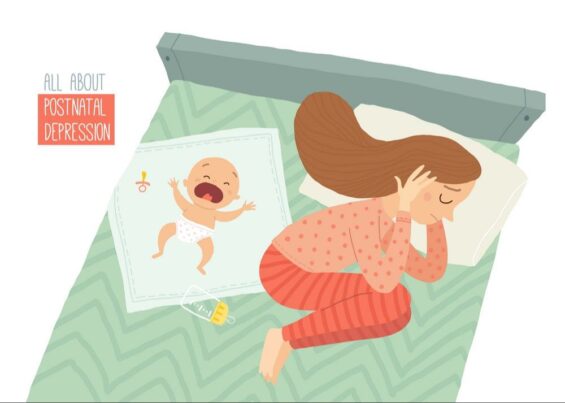Are You at Risk for Postpartum Depression?
(
Becoming a new mother is a life-changing experience, filled with excitement, joy, and uncertainty. While many women enjoy a smooth transition into motherhood, others may struggle with postpartum depression (PPD). PPD is a serious mental health condition that affects up to 1 in 5 women after childbirth, according to the National Childbirth Trust (NCT). In this article, we’ll explore the risk factors for PPD and provide guidance on how to identify and manage the condition.
Risk Factors for Postpartum Depression
Several factors can increase a woman’s risk of developing PPD. These include:
Previous history of depression: Women who have experienced depression during their pregnancy or in the past are more likely to develop PPD.
Family history of depression: Women with a family history of depression or other mental health conditions are at higher risk of developing PPD.
Social support: Women who have limited social support networks or feel isolated may be more likely to develop PPD.
Pregnancy complications: Women who experience complications during pregnancy, such as preeclampsia or gestational diabetes, may be at higher risk of developing PPD.
Hormonal changes: The sudden drop in estrogen and progesterone levels after childbirth can contribute to mood changes and symptoms of PPD.
Breastfeeding difficulties: Women who experience difficulties with breastfeeding may be more likely to develop PPD.
Signs and Symptoms of Postpartum Depression
PPD can manifest differently in each woman, but common symptoms include:
– Feeling sad, empty, or hopeless
– Difficulty bonding with the baby
– Loss of interest in activities that were once enjoyed
– Changes in sleep patterns
– Changes in appetite
– Physical symptoms such as headaches, fatigue, or muscle pain
Identifying and Managing Postpartum Depression
If you’re experiencing any of these symptoms, it’s essential to seek help from your healthcare provider. They can diagnose PPD and provide guidance on managing the condition. Here are some ways to identify and manage PPD:
– Screening: Your healthcare provider should screen you for PPD during your postpartum check-ups. Don’t hesitate to ask about PPD if you’re concerned.
– Talk therapy: Cognitive-behavioral therapy (CBT) and interpersonal therapy (IPT) are effective forms of talk therapy for managing PPD.
– Medication: Antidepressant medications such as selective serotonin reuptake inhibitors (SSRIs) can help alleviate symptoms of PPD.
– Support groups: Joining a support group or online community can connect you with other women who are experiencing similar symptoms.
Conclusion
Postpartum depression is a common and treatable condition that affects many new mothers. By understanding the risk factors and identifying the signs and symptoms, you can take steps to manage the condition. If you’re experiencing symptoms of PPD, don’t hesitate to seek help from your healthcare provider. Remember, you’re not alone, and with support and treatment, you can overcome PPD and thrive as a new mother.
References
SAMHSA – Substance Abuse and Mental Health Services Administration
Postpartum Depression – StatPearls – NCBI Bookshelf (nih.gov)
Websites:
Britmed Healthcare: https://britmedhealthcare.co.uk/
Nightingale Hospital: https://www.nightingalehospital.co.uk/
Top Doctors: https://www.topdoctors.co.uk/doctor/ahmed-el-missiry
You can also book, Contact us on WhatsApp 08009708017




